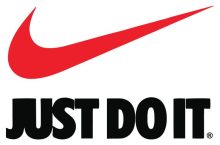Company Logo Dublin, April 04, 2025 (GLOBE NEWSWIRE) — The “Fitness & Wellness Software Market – Global Outlook & Forecast 2025-2030” report has been added to ResearchAndMarkets.com’s offering. The Fitness & Wellness Software Market was valued at USD 81.90 billion in 2024, and is projected to reach USD 133.70 billion by 2030, rising at a […]

Dublin, April 04, 2025 (GLOBE NEWSWIRE) — The “Fitness & Wellness Software Market – Global Outlook & Forecast 2025-2030” report has been added to ResearchAndMarkets.com’s offering.
The Fitness & Wellness Software Market was valued at USD 81.90 billion in 2024, and is projected to reach USD 133.70 billion by 2030, rising at a CAGR of 8.51%.
Rise of Hybrid Models in Fitness Software
Hybrid fitness combines gym workouts, home exercises, and outdoor activities into one flexible approach, giving users the freedom to choose what suits their lifestyle. This model uses technology like fitness apps, virtual coaching, and wearable devices to create seamless workout experiences. Companies like Peloton and NordicTrack integrate connected equipment with live classes, while apps like Fitbit and MyFitnessPal provide easy tracking for activity and nutrition. Virtual reality platforms like Supernatural add an engaging touch, while AI-powered tools like Future offer personalized fitness plans.
Post-pandemic, the demand for hybrid fitness has surged, as people look for convenient, customizable solutions. For businesses, this trend is a chance to attract broader audiences with offerings that combine traditional gym memberships, online classes, and remote tracking. Innovations like cloud-based platforms such as Trainerize are making it easier for gyms and trainers to adopt hybrid models, pushing the global fitness & wellness software market toward rapid growth and constant evolution.
Rise of Wearable Technology in Fitness & Wellness Software
Wearable technology is transforming the fitness and wellness software market by making health tracking easier and more accessible. Devices like the Apple Watch, Fitbit, and Garmin trackers monitor key health metrics such as heart rate, sleep, and activity levels, offering personalized insights with AI-driven features. Augmented reality (AR) wearables, like Magic Leap glasses, are blending digital and real-world experiences, enhancing fitness training and virtual sports. Specialized health wearables, such as continuous glucose monitors for diabetics by Dexcom, are meeting specific needs, while gaming-focused devices like Oculus VR headsets add fun to workouts.
Companies like WHOOP focus on stress and recovery monitoring for athletes, and Peloton integrates wearables with fitness equipment for seamless tracking. Rising health awareness, supported by reports like the WHO’s finding that 1.4 billion adults lack adequate physical activity, is driving the adoption of these technologies. Innovations like smart clothing by Hexoskin, which measures breathing and heart rate, are expanding the potential of wearables, creating new opportunities for personalized health management worldwide.
Geographical Analysis
North America is the leading region in the global fitness & wellness software market due to a combination of a strong health-conscious culture and advanced technological infrastructure. The region, particularly the United States and Canada, has seen a surge in the adoption of digital fitness solutions. The demand is driven by a focus on healthier lifestyles, the popularity of fitness tech, and the growing trend of remote or hybrid fitness solutions. Additionally, North America’s robust fitness market, including health clubs, fitness centers, and corporate wellness programs, has created an ideal environment for the growth of fitness and wellness software platforms. With consumers increasingly looking for flexible, accessible, and personalized fitness options, the fitness & wellness software market is poised for continued expansion in the region.
Moreover, big companies like Peloton, Fitbit, Mindbody, and MyFitnessPal are dominating the North American fitness software landscape by utilizing cutting-edge technologies like cloud computing, artificial intelligence (AI), and machine learning (ML). For instance, Peloton offers a subscription-based platform that integrates fitness tracking with live and on-demand workout classes, delivering a fully immersive fitness experience. Fitbit combines its wearable devices with a cloud-based platform that allows users to track a wide range of health metrics, such as heart rate, sleep patterns, and physical activity. Additionally, Mindbody provides a management platform for fitness businesses, helping them with scheduling, payments, and customer engagement, while also offering an integrated mobile app for consumers. These companies are leading the shift toward more data-driven, personalized fitness solutions, using advanced technology to track and optimize users’ health journeys.
Europe is the second-largest fitness & wellness software market, with countries like Germany, the United Kingdom, and France at the forefront. The region has a strong focus on wellness and preventive healthcare, driving demand for fitness solutions. Factors such as growing health consciousness, urban lifestyles, and a high penetration of smartphones and wearable devices have contributed to the market’s expansion. Furthermore, Asia-Pacific is the fastest-growing fitness & wellness software market, driven by increasing smartphone adoption, growing urbanization, and rising disposable incomes. The region, encompassing diverse markets such as China, India, Japan, Australia, and Southeast Asia, is experiencing accelerated growth due to increasing digital penetration, rising disposable incomes, and heightened health consciousness post-pandemic. Also, the region’s market growth is further bolstered by the region’s tech-savvy youth population, government initiatives promoting wellness, and the adoption of remote fitness solutions.
Although smaller, the Middle East & Africa market shows promise due to increasing investments in wellness tourism and urban fitness centers. Countries like UAE, Saudi Arabia, and South Africa are key players. Moreover, Latin America is an emerging fitness & wellness software market with growing health awareness and increasing gym memberships in countries like Brazil, Mexico, and Argentina. Apps like Gympass are popular for providing flexible memberships and access to multiple gyms across the region. And, many fitness centers in Latin America have adopted virtual fitness solutions to cater to the region’s younger demographic.
Competitive Landscape
The global fitness and wellness software market has seen significant growth, driven by increased awareness of health, advancements in technology, and a shift toward digital fitness solutions. This market is characterized by a diverse range of offerings, including fitness tracking, virtual training, wellness management, and integrated platforms. The competitive landscape highlights a mix of established players, innovative startups, and tech giants.
The fitness and wellness software market includes diverse players offering solutions tailored to individual and corporate wellness needs. For instance, Mindbody is one of the leading players in the fitness and wellness software market. The company offers a comprehensive software platform that includes features such as class scheduling, payment processing, marketing tools, and customer engagement for fitness and wellness businesses. Mindbody serves a global client base of fitness centers, gyms, wellness coaches, and spas. Also, Trainerize is a fitness software platform that enables personal trainers and fitness coaches to create customized workout programs for their clients. The platform offers features like workout tracking, progress monitoring, video tutorials, and client communication tools. Trainerize has gained popularity among personal trainers, gym owners, and fitness enthusiasts.
The global fitness & wellness software market is experiencing robust growth, fueled by the demand for flexibility, digital integration, and operational efficiency. Providers are increasingly adopting advanced software solutions to cater to consumer preferences, improve business processes, and stay competitive in a rapidly evolving market. Key trends, such as boutique fitness studios, virtual experiences, and youth-driven demand, are shaping the future of the market. Additionally, M&A activity highlights the strategic investments being made to address these trends and scale operations globally. With continued innovation and alignment with consumer needs, the fitness & wellness software market is poised for sustained expansion and success.
Insights by Type
The use of fitness & wellness software varies depending on the various requirements. The global fitness & wellness software market by type is segmented into cloud-based software, mobile applications, on-premises software, and others. The cloud-based software leads the market share due to its accessibility, scalability, and seamless integration capabilities. It enables users to access services across devices with real-time updates, supporting hybrid fitness models, virtual classes, and personalized coaching. Big companies like Mindbody and Peloton leverage cloud platforms to offer AI-driven analytics, remote session scheduling, and user engagement tools. Technical advancements, such as API integration, machine learning for personalized insights, and secure data storage on cloud platforms, enhance efficiency and user satisfaction. The segment is booming as businesses prioritize digital transformation, driven by the global shift toward connected, data-driven wellness ecosystems.
Furthermore, mobile applications have become an essential part of the fitness & wellness software market, driven by the ubiquity of smartphones and the growing preference for on-the-go solutions. These apps cater to diverse fitness needs, ranging from workout tracking and meditation to diet planning and yoga sessions. Their widespread adoption is fueled by freemium models, offering basic features for free while charging for premium functionalities. The segment’s growth is further accelerated by advancements in gamification, where users are motivated to achieve fitness goals through engaging, game-like experiences.
Insights by Age Group
The use of fitness & wellness software varies depending on the various requirements. The adult segment dominates the global fitness & wellness software market due to the increasing focus on personal health, fitness, and lifestyle management among working professionals and active individuals aged 18-60. This age group drives the demand for solutions that offer flexibility, such as virtual fitness classes, progress tracking, and wellness coaching.
Factors like awareness about preventive healthcare, and the popularity of wearable integrations have further propelled adoption. Companies like ClassPass and MyFitnessPal cater to this demographic by offering AI-driven personalization, gamification features, and cross-platform compatibility, ensuring a seamless user experience. Furthermore, cloud-based platforms provide real-time insights into fitness goals, while mobile apps enable integration with wearables like the Apple Watch and Fitbit, providing tailored recommendations based on user activity. Advanced features, such as biometric tracking, sleep monitoring, and AI-powered nutrition plans, address the holistic needs of adults, blending fitness and overall wellness. The segment is set to boom in the fitness & wellness software market as digital transformation in fitness continues to evolve, fueled by innovations in machine learning, big data analytics, and virtual reality workouts tailored to the preferences of this active age group.
Insights by End-users
The global fitness & wellness software market by end-user is segmented into fitness centers & health clubs, corporate organizations, individuals & home users, hospitals & rehabilitation centers, educational institutions, and others. Fitness centers & health clubs are at the forefront of the market due to the increasing demand for personalized fitness solutions and the need for efficient management of members, classes, and equipment. These facilities benefit from software solutions that enhance customer engagement, streamline operations, and provide real-time data on workout progress and member activity. Cloud-based platforms enable fitness centers to offer flexible memberships, online classes, and personal training, all of which are driving growth. The boom in this segment is largely attributed to the shift towards digital fitness and the rise of hybrid models, where users can access both in-person and virtual fitness experiences.
Furthermore, corporate wellness programs use fitness and wellness software to enhance employee well-being, reduce healthcare costs, and improve productivity. The software facilitates fitness challenges, health tracking, and mental wellness initiatives. The global fitness & wellness software market in corporate environments is expected to grow as organizations prioritize employee well-being in their operational strategies. With a focus on personalization, hybrid solutions, and mental health resources, these platforms are set to play a pivotal role in shaping healthier work cultures. The increasing demand for data-driven wellness strategies and employee engagement tools will continue driving innovation in this segment.
Key Attributes
|
Report Attribute |
Details |
|
No. of Pages |
383 |
|
Forecast Period |
2024-2030 |
|
Estimated Market Value (USD) in 2024 |
$81.9 Billion |
|
Forecasted Market Value (USD) by 2030 |
$133.7 Billion |
|
Compound Annual Growth Rate |
8.5% |
|
Regions Covered |
Global |
Key Topics Covered
1 Scope & Coverage
2 Premium Insights
2.1 Opportunity Pockets
2.1.1 Market Maturity Indicator
2.1.2 Regional and Countries
2.1.3 Regional Insights
2.2 Market Overview
2.3 Market Dynamics
2.3.1 Market Trends
2.3.2 Market Enablers
2.4 Segment Analysis
2.4.1 Type
2.4.2 Age Group
2.4.3 End-users
2.5 Competitive Landscape
2.6 Geographical Analysis
3 Market at a Glance
4 Introduction
4.1 Overview
4.1.1 Smartwatch User Demographics: Gender and Age-based Adoption Trends
4.2 Adoption of Cloud-based Fitness Platforms
4.2.1 Key Drivers for the Growth of Cloud-based Fitness Software Include:
4.3 Integration of Wearable Devices
4.3.1 Examples of Wearable Devices and Integration in Fitness Software
4.4 Rise of Artificial Intelligence and Machine Learning in Fitness
4.4.1 Key Drivers for this Trend Include:
4.4.2 Examples of AI and ML in Fitness
4.5 Growth of Corporate Wellness Programs
4.5.1 Key Drivers for the Growth of Corporate Wellness Programs
4.6 Expansion of Virtual Fitness and Remote Training
4.6.1 Key Drivers for the Growth of Virtual Fitness
4.7 Focus on Mental Health and Holistic Wellness
4.7.1 Key Drivers for Focus on Mental Health and Holistic Wellness
4.7.2 Examples of Companies and Products Focused on Mental Health and Holistic Wellness
4.8 Value Chain Analysis
4.8.1 Research and Development (R&D)
4.8.2 Product Development
4.8.3 Marketing and Sales
4.8.4 Distribution and Implementation
4.8.5 Customer Service and Support
4.8.6 Post-Implementation Evaluation
5 Market Opportunities & Trends
5.1 The Rise of Hybrid Models in Fitness Software
5.1.1 Impact of Hybrid Models on the Fitness and Wellness Software Market
5.2 The Rise of Increasing Health Awareness in Fitness Software
5.3 AI and Hybrid Fitness Coaches Trends Drive Personalized Wellness Experiences in Fitness Software
6 Market Growth Enablers
6.1 The Rise of Wearable Technology in Fitness & Wellness Software
6.2 Driving the At-Home Fitness Revolution with Advanced Gym Software Solutions
6.3 Empowering Personalized Fitness Journeys Through Mobile Apps
7 Market Restraints
7.1 Data Privacy and Security Concerns
7.2 Inconsistent Digital Experience in Fitness & Wellness Software Market
7.2.1 Companies Facing Inconsistent Digital Experience Challenges
7.3 Limited Digital Literacy Among Target Audiences
7.3.1 Limited Digital Literacy Restrains the Growth of the Fitness & Wellness Software Market
7.4 High Initial Investment for Adoption
8 Market Landscape
8.1 Market Overview
8.2 Market Size & Forecast
8.3 Five Forces Analysis
8.3.1 Threat of New Entrants
8.3.2 Bargaining Power of Suppliers
8.3.3 Bargaining Power of Buyers
8.3.4 Threat of Substitutes
8.3.5 Competitive Rivalry
9 Type
9.1 Market Snapshot & Growth Engine
9.2 Market Overview
9.3 Cloud-based Software
9.4 Mobile Applications
9.5 On-Premises Software
9.6 Others
10 Age-Group
10.1 Market Snapshot & Growth Engine
10.2 Market Overview
10.3 Adults
10.4 Geriatrics
10.5 Pediatrics
11 End-user
11.1 Market Snapshot & Growth Engine
11.2 Market Overview
11.3 Fitness Centers & Health Clubs
11.4 Corporate Organizations
11.5 Individuals & Home Users
11.6 Hospitals & Rehabilitation Centers
11.7 Educational Institutions
11.8 Others
12 Geography
12.1 Market Snapshot & Growth Engine
12.2 Geographic Overview
13 North America
13.1 Market Overview
13.2 Market Size & Forecast
13.3 Type
13.4 Age-Group
13.5 End-users
13.6 Key Countries
13.7 US: Market Size & Forecast
13.8 Canada: Market Size & Forecast
14 APAC
14.1 Market Overview
14.2 Market Size & Forecast
14.3 Type
14.4 Age-Group
14.5 End-users
14.6 Key Countries
14.7 China: Market Size & Forecast
14.8 India: Market Size & Forecast
14.9 Japan: Market Size & Forecast
14.10 Australia: Market Size & Forecast
14.11 South Korea: Market Size & Forecast
14.12 Singapore: Market Size & Forecast
14.13 Malaysia: Market Size & Forecast
15 Europe
15.1 Market Overview
15.2 Market Size & Forecast
15.3 Type
15.4 Age-Group
15.5 End-users
15.6 Key Countries
15.7 UK: Market Size & Forecast
15.8 Germany: Market Size & Forecast
15.9 France: Market Size & Forecast
15.10 Italy: Market Size & Forecast
15.11 Russia: Market Size & Forecast
15.12 Norway: Market Size & Forecast
15.13 Denmark: Market Size & Forecast
15.14 Poland: Market Size & Forecast
16 Latin America
16.1 Market Overview
16.2 Market Size & Forecast
16.3 Type
16.4 Age-Group
16.5 End-users
16.6 Key Countries
16.7 Brazil: Market Size & Forecast
16.8 Argentina: Market Size & Forecast
16.9 Mexico: Market Size & Forecast
17 Middle East & Africa
17.1 Market Overview
17.2 Market Size & Forecast
17.3 Type
17.4 Age-Group
17.5 End-users
17.6 Key Countries
17.7 UAE: Market Size & Forecast
17.8 Saudi Arabia: Market Size & Forecast
17.9 South Africa: Market Size & Forecast
18 Competitive Landscape
18.1 Competition Overview
19 Key Company Profiles
19.1 ABC Fitness Solutions
19.2 Mindbody
19.3 Vagaro
19.4 Virtuagym
19.5 Zenoti
19.6 Xplor Technologies
20 Other Prominent Vendors
20.1 Zen Planner
20.2 Classpass
20.3 Trainerize
20.4 Wodify
20.5 Myfitnesspal
20.6 Fitbit
20.7 Peloton
20.8 Aaptiv
20.9 Jefit
20.10 Nudge Coach
20.11 Gymie
20.12 Trainheroic
20.13 Tonal
20.14 Exercism
20.15 Bodypump
20.16 Sworkit
20.17 Wellnessliving
20.18 Fitli
20.19 Truecoach
20.20 Kemtai
21 Report Summary
21.1 Key Takeaways
21.2 Strategic Recommendations
22 Quantitative Summary
22.1 Market by Geography
22.2 Type
22.3 Age-Group
22.4 End-users
For more information about this report visit https://www.researchandmarkets.com/r/26p0yr
About ResearchAndMarkets.com
ResearchAndMarkets.com is the world’s leading source for international market research reports and market data. We provide you with the latest data on international and regional markets, key industries, the top companies, new products and the latest trends.
CONTACT: CONTACT: ResearchAndMarkets.com Laura Wood,Senior Press Manager press@researchandmarkets.com For E.S.T Office Hours Call 1-917-300-0470 For U.S./ CAN Toll Free Call 1-800-526-8630 For GMT Office Hours Call +353-1-416-8900














